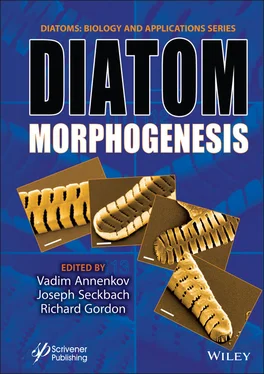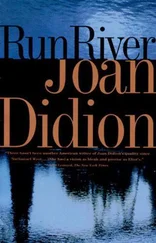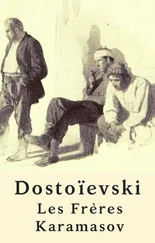Diatom Morphogenesis
Здесь есть возможность читать онлайн «Diatom Morphogenesis» — ознакомительный отрывок электронной книги совершенно бесплатно, а после прочтения отрывка купить полную версию. В некоторых случаях можно слушать аудио, скачать через торрент в формате fb2 и присутствует краткое содержание. Жанр: unrecognised, на английском языке. Описание произведения, (предисловие) а так же отзывы посетителей доступны на портале библиотеки ЛибКат.
- Название:Diatom Morphogenesis
- Автор:
- Жанр:
- Год:неизвестен
- ISBN:нет данных
- Рейтинг книги:5 / 5. Голосов: 1
-
Избранное:Добавить в избранное
- Отзывы:
-
Ваша оценка:
- 100
- 1
- 2
- 3
- 4
- 5
Diatom Morphogenesis: краткое содержание, описание и аннотация
Предлагаем к чтению аннотацию, описание, краткое содержание или предисловие (зависит от того, что написал сам автор книги «Diatom Morphogenesis»). Если вы не нашли необходимую информацию о книге — напишите в комментариях, мы постараемся отыскать её.
A unique book presenting the range of silica structures formed by diatoms, theories and hypotheses of how they are made, and applications to nanotechnology by use or imitation of diatom morphogenesis.
Audience
Diatom Morphogenesis — читать онлайн ознакомительный отрывок
Ниже представлен текст книги, разбитый по страницам. Система сохранения места последней прочитанной страницы, позволяет с удобством читать онлайн бесплатно книгу «Diatom Morphogenesis», без необходимости каждый раз заново искать на чём Вы остановились. Поставьте закладку, и сможете в любой момент перейти на страницу, на которой закончили чтение.
Интервал:
Закладка:
[1.45] Losic, D. (Ed.), Diatom Nanotechnology - Progress and Emerging Applications , Royal Society of Chemistry. Nanoscience & Nanotechnology, Series 44, Cambridge, 2017.
[1.46] Williams, D.M., Diatom Classifications: What Purpose Do They Serve?, in: Modern Trends in Diatom Identification, Developments in Applied Phycology , vol. 10, G. Cristóbal et al. (Eds.), 2020.
[1.47] Hildebrand, M., Lerch, S.J.L., Shrestha, R.P., Understanding Diatom Cell Wall Silicification— Moving Forward. Front. Mar. Sci ., 5, 125, 2018.
[1.48] Ghobara, M.M., Gordon, R., and Reissig, L., The mesopores of raphid pennate diatoms: Toward natural controllable anisotropic mesoporous silica microparticles. In: Diatom Morphogenesis [DIMO, Volume in the series: Diatoms: Biology & Applications , series editors: Richard Gordon & Joseph Seckbach]. V. Annenkov, J. Seckbach and R. Gordon, (eds.) Wiley-Scrivener, Beverly, MA, USA, pp. 391–418, 2020.
1 * Corresponding author: kalina.manoylov@gcsu.edu
2
The Uncanny Symmetry of Some Diatoms and Not of Others: A Multi-Scale Morphological Characteristic and a Puzzle for Morphogenesis *
Janice L. Pappas1+, Mary Ann Tiffany2 and Richard Gordon3,4
1Department of Mathematics, Michigan Math and Science Scholars, University of Michigan, Ann Arbor, MI, United States
2Dept. of Biology, San Diego State University, San Diego, CA, United States
3Gulf Specimen Marine Laboratory & Aquarium, Panacea, FL, United States
4C.S. Mott Center for Human Growth & Development, Department of Obstetrics & Gynecology, Wayne State University, Detroit, MI, United States
Abstract
Organism symmetry via body plan is the balanced arrangement of structural features (internally or externally) that is definable in terms of dimension (2D or 3D) and geometry (contours, surfaces, boundaries). Symmetry is evident at the endpoint of morphogenesis and at each scale, from genes to cells to organism to population or higher taxonomic level. Symmetry may change from juvenile to adult stages as well as between sexual and asexual reproduction. The arrangement of morphological features reiterates symmetry antecedents so that at any given time, degrees of symmetry may be directed, random or chaotic outcomes signifying degrees of instability throughout morphogenesis.
With their geometric surface ornamentation, diatoms exhibit a high degree of rotational and/or reflective symmetry depending on the ontogenetic path, either commencing with an annulus or a sternum for centrics and pennates, respectively. Sometimes this symmetry is remarkable, whence we call it “uncanny symmetry”. Using centric diatom examples, surface features are used in uncanny rotational symmetry assessment via digital image processing techniques and include analysis of vegetative valve formation stage, initial valves, and abnormally developed cells. Quantitatively, entropy as digital image information content is related to symmetry states and is used to determine random and chaotic instability in morphogenesis.
Keywords:Rotational symmetry, reflective symmetry, centric diatoms, diatom morphogenesis, fluctuating asymmetry, uncanny symmetry, entropy, developmental instability
2.1 Introduction
Morphology is a conduit to assessing evolutionary relationships as well as ecological interactions among organisms. Different aspects of morphology provide information on size, shape, color, pattern of the external form of an organism, as well as internal anatomical features. Morphology is informative regarding commonalities among organisms at the species level in population studies and among larger taxonomic groupings from generic to phylum level in macroevolutionary studies. At the phylum level, body plan (bauplan) assessment enables morphological analysis across taxonomic levels, and characteristics of phylogenetic importance can be gleaned as comparative markers of continuity in arrangement of structural form.
A body plan is the group of structural characteristics of a phylum that is shared via development [2.41]. Genetic and embryogenetic processes manifest themselves throughout development, culminating in the adult form as the end member of morphogenesis. The connection among morphogenetic forms throughout development is exemplified via symmetry and symmetry breaking [2.3, 2.19, 2.24]. It is symmetry that enables assessment of body plans not only among developmental stages within a given phylum but also among phyla exhibiting commonality in some aspect of structural form.
Symmetry as an external morphological characteristic is determined via perception or observation of the “balance” of an organism. That is, we perceive or observe whether the organism exhibits some evenly distributed “likeness” of form, albeit as a reflective [2.159] or rotational [2.159] impression. To determine the “balance” or “likeness” of a given form, we necessarily perceive or observe the geometry of the organism explicitly or implicitly as an impression. To arrive at the point of recognition of the form as an identifiable entity, we perceive such characteristics as degree of curvedness (roundness) or angularity (sharpness) as well as distinct surface peaks, valleys, or saddles (local maxima or minima as extrema), if present. Surface geometry plays a key role in our perception of the quality of form [2.104–2.108]. Contours and edges are the pieces of information we gather and connect to the extrema or points (dots) that enable us to concoct a contiguous picture or image about the form we perceive or observe. This provides the initial point of determination in the assessment of symmetry of a given organism. The boundary shape of an organism as a composite of contours is instrumental in symmetry determination.
The product of morphogenesis culminates in a fixed or adult shape in which the organism will exhibit specific external and internal symmetries, usually having symmetries common to a higher taxonomic group. Structural aspects of morphology such as symmetry are evident from the morphogenetic process of each succeeding step in development. Arrangement of morphological features reiterate internal and external symmetry antecedents so that to some extent, symmetry is a directed process with regard to morphogenesis [2.54]. Symmetry is not only evident at the endpoint of morphogenesis but also at each scale of the materials involved, from genes to organelles to cells to tissues and beyond, in the morphogenetic process. That is, symmetry is hierarchical and scale dependent. Changes from juvenile to adult stages as well as differences between sexual and asexual reproduction will exhibit symmetry characteristics at each stage of development. Matching symmetry states to morphogenetic stages may inform the developmental process.
Symmetry is, then, a compilation of perception or observation as well as the arrangement of structural features (internally or externally) defining dimension (3D) and geometry (contours, surfaces, and boundaries) in terms of “balance” and “likeness”, and this compilation can be evaluated at any step in the morphogenetic and developmental processes of an organism at the individual, population, or higher taxonomic grouping level.
2.1.1 Recognition and Symmetry
Object recognition is the term applied to our understanding of how to perceive or observe a three-dimensional (3D) object and interpret it from its two-dimensional (2D) projection. Perception studies with Attneave’s cat [2.9] or Biederman’s cup [2.13] as iconic images to discern the process of recognition utilize the geometric aspect of objects as points connected with straight edges or partial contours, respectively (cf. visual tracking of eye movements [2.4]). These studies showed that recognition is initiated from perception of outlines rather than just points on an object. Information acquisition is accomplished via this perception or observation. One perspective is the preference for the simplest interpretation over others to infer a structured whole, and this forms the basis of structural information theory [2.80]. Another perspective involves preference for a minimum (not necessarily simple) description forming the basis of algorithmic information theory [2.21]. In any case, information theory is at the heart of object recognition. Perceived or observed information may occur as an object that is recognized. Initial recognition may occur of a whole scene as an object. In contrast, individual objects in the scene and their boundary and surface attributes such as shape, transparency, pattern, location, size, or texture may be perceived, and perception violations of individual objects in a scene may be recognized (Figure 2.1, after Mezzanotte’s scenes, in [2.14]). Symmetry as a mode of recognition can apply to the scene as an object or the parts of this object in relation to the boundary and surface attributes that comprise the scene. Information about symmetry is acquired with respect to an external or anatomical viewpoint.
Читать дальшеИнтервал:
Закладка:
Похожие книги на «Diatom Morphogenesis»
Представляем Вашему вниманию похожие книги на «Diatom Morphogenesis» списком для выбора. Мы отобрали схожую по названию и смыслу литературу в надежде предоставить читателям больше вариантов отыскать новые, интересные, ещё непрочитанные произведения.
Обсуждение, отзывы о книге «Diatom Morphogenesis» и просто собственные мнения читателей. Оставьте ваши комментарии, напишите, что Вы думаете о произведении, его смысле или главных героях. Укажите что конкретно понравилось, а что нет, и почему Вы так считаете.












